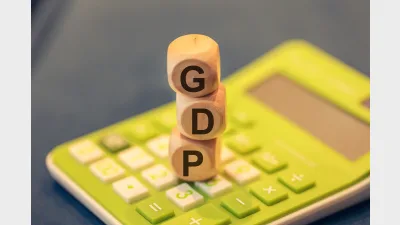Australian equities take the brunt of the downturn in global sentiment


Australia’s economic fundamentals may remain relatively sound, but as Damon Taylor reports, the performance of Australian equities has continued to reflect the sentiment generated by global events.
Amongst any number of global economies which continue to falter, it seems clear that Australia can still be considered ‘the lucky country’ when it comes to the strength of its economic fundamentals.
Unemployment is low, inflation has been well controlled, debt is negligible and yet the reality, according to Paul Taylor, head of Australian equities at Fidelity, is that Australia remains affected by what is a very macro environment.
“We seem to take two steps forward, two steps back, and the market goes nowhere,” he said.
“It gets depressed about sovereign debt issues in Europe, Greece potentially defaulting or restructuring, and then the disaster comes off the table and we take two steps forward again.
“We’re really in that sort of macro bounce that can only be described as risk on/risk off.”
Robert Van Munster, head of Equities for Tyndall, said that for investors in the Australian equity market, performance over the past 12 months had been disappointing.
“And that’s particularly the case when you compare it with our international peers like the United States,” he said.
“Their economy has been much weaker, their debt is a lot larger, unemployment remains a lot higher - and yet, their share market performance has been better than ours.
“Even if we look back to periods where the Australian market has fallen more than 50 per cent in a year, and that would include 1927, 1973, 1980, 1987, and then look at the rebounds post that this market recovery is the weakest,” Van Munster added. “The question, of course, is why?”
But while he acknowledged that investors – institutional and retail alike – were scratching their heads as to why the Australian share market’s recovery had been so weak, Van Munster said that Tyndall was attributing it to a number of factors.
“Firstly, it’s the strength of the Australian dollar which is corroding international competitiveness and translating into weaker foreign earnings,” he said. “It’s adversely affecting Australian retailers, particularly those with cross-competition coming from the internet.
“The second factor is a lack of productivity growth in Australia,” Van Munster continued. “We have productivity growth running at less than 1 per cent and wages growth running at circa 4 per cent, which obviously impacts the bottom line of Australian companies.”
According to Van Munster, the third and final aspect was the emergence and persistence of a two-speed economy within Australia.
“Our economy is going through structural change,” he said. “We have a capex boom occurring in the resources sector, but a lot of that capital expenditure is being provided by overseas companies.
“Australian companies are missing out on a large part of that economic growth and the share market isn’t really exposed to those benefits,” Van Munster continued.
“Then, on the other side, the Reserve Bank of Australia is keen to keep the rest of the economy capped so that we don’t have an inflation problem – particularly an asset bubble such as another property boom like we’ve seen after previous resources booms.
“As a consequence, the rest of the economy is suffering, but at the end of the day, we have unusual fiscal conditions and monetary conditions in Australia, and it means that, for the time being, both the market and consumers are doing it tough,” Van Munster said.
Yet that is not to say that the Australian equities market hasn’t had its fair share of standout performers. While acknowledging the headwinds outlined by Van Munster, Hyperion Asset Management chief investment officer Mark Arnold said that the market’s more defensive stocks were those that had done reasonably well.
“The defensive, high-yield stocks have actually done pretty well in a general sense,” he said.
“A good example of that is Telstra, which was one of the top-performing stocks last year after a decade of underperforming.
“In terms of the stocks that we have in our own portfolio, the internet stocks that we hold, the likes of the REA Group, carsales.com.au, and SEEK, those stocks have performed very well in terms of their financial metrics over the last 12 months as well,” Arnold continued.
“Their proper growth and sales growth has been very strong and that’s been reasonably well reflected in their share price performances.”
For Taylor, when looking for Australian stocks that had outperformed over the past 12 months and those likely to do so in 2012, the key would be discernment.
“To me, the interesting thing is that if I look across the world at valuations, everything’s trading at very similar valuation levels,” he said. “If we look at all world markets, they’re all really trading on 10x or 11x, everything’s on the same multiple.
“And if you start to delve into the Australian market, all the sectors are trading about the same multiples – even if you go into the stocks, the same pattern exists there as well,” Taylor added.
“There’s been this real compression and I think that says the markets are extremely fickle at the moment; they don’t believe anything anyone is telling them to the extent that it’s a case of ‘I’ll believe it when I see it’.”
Taylor said that whether the company was good quality, bad quality, high growth, or low growth, everything was trading on the same sort of multiples because the market was viewing those stocks with equal scepticism.
“However, I do think that 2012 is definitely going to be year of differentiation, a year of discernment and looking through the market,” he said.
“So using the resources sector as an example, it’s going to be the mining services stocks that do well rather than the miners themselves.
“In a low-growth world, if you can deliver dividend yield and sustainable dividend yield, that’s going to be a sought-after asset,” Taylor continued.
“And similarly, if you can deliver growth in a low-growth world, that’s also going to be bid up by the market as well.
“So that just means there’s going to be a lot more discernment. There’s going to be a lot of individual stocks that stand out, those with strong management teams who have sound strategies that can actually deliver growth and ensure that yields are sustainable. They’re the ones who are going to do well.”
Of course, while Taylor’s prediction of greater stock differentiation may prove accurate, the fact remains that investors have been and are likely to continue to be wary. The current trend is risk aversion and for Van Munster it is a fact that domestic equities managers need to be aware of, if not concerned by.
“Certainly, there’s a high degree of uncertainty about the structural changes occurring in Australia and the strength of the global economy,” he said. “So yes, in that regard investors want to remain defensive and protect their capital.
“This is reflected in the amount of funds flowing into term deposits, for example,” Van Munster added.
“And globally, particularly private investors have been happy to invest their funds into relative safe havens – even if they’re not getting a return.
“It’s been more about the return of your capital rather than a return on your capital, if you like.”
Arnold said that he too had seen significant evidence of moves down the risk curve over a prolonged period.
“At the asset allocation level, there’s certainly been a move towards more defensive asset classes like cash and fixed interest and away from growth assets like equities and property,” he said.
“But we see that as an opportunity for investors in that we think that moves towards more defensive asset allocations are really being driven by backwards-looking thinking and backwards-looking fears.
“We think it’s far more likely that markets will revert,” Arnold continued. “So price/earnings ratios have come down a long way over the last few years and we think there’s potential for the price/earnings ratios within the market to expand from current levels.
“And that, for us, is a definite upside.”
Like Taylor, Arnold noted that current current price/earning ratios were sitting at around 12x.
However, his view was that if investors took a longer-term view and excluded the high inflation periods during the 1970s and 1980s, the average price/earnings ratio had actually been around 13.5x to 14x on a trailing basis.
“So we think there’s upside potential in terms of the price/earnings ratio,” he said. “Also, because there’s quite a few sectors of the economy where things are pretty tired and demand’s pretty depressed, we think there’s earnings recovery potential in a cyclical sense as well.
“And that’s particularly so if you have a situation where the Australian dollar started to drift lower,” Arnold added. “That would take a lot of pressure off some of the key sectors in the economy and lead to higher earnings for those particular sectors.”
The reality, according to Van Munster, is that risk-averse and backwards-looking attitudes cannot last forever.
“Sitting in investments that provide literally zero returns is not the best strategy,” he said. “In Australia, we have the luxury that term deposits are offering relatively good interest rates, but that’s not going to last forever either.
“At some point, investors need to have a diversified portfolio and they need to look at growth opportunities,” Van Munster continued.
“If the world’s economic prospects improve, the risk premium that people will require to invest in more risky assets will erode and that will create the best investment opportunities for equities.
“At the moment, you could make a case quite easily that investors should be defensive, but in the long run, that’s not going to assist them for very long.”
So if investors’ current wariness is likely to be short-lived and if the opportunity in domestic equities markets is there for the taking, the question lies in where they are likely to turn.
For Australia’s super industry, the upcoming MySuper environment has created a significant focus on cost. Manager selection has become critical, but for Van Munster the key is to understand the super fund’s investment strategy and how a fund manager fits into that.
“Across a number of superannuation funds, we’re seeing a continuation of the core/satellite approach - going passive for a core part of the portfolio and then having satellite managers who take a more risky, active, and concentrated approach,” he said. “We’re seeing more and more of that.
“But in the active management space, I think institutional investors are becoming increasingly more scientific about it,” Van Munster continued. “A number of funds have consolidated the number of fund managers they have to reduce the degree of stock duplication and improve diversification.
“They’re looking for fund managers who complement each other.”
For Taylor, having runs on the board over a prolonged period of time was also critical.
“Over the last few years, I think a number of fund managers have really struggled in this sort of environment, really struggled to deliver solid performance,” he said. “And I guess that’s what we’ve done and super funds and investors generally have liked what they’ve seen.
“So over the last 9 years now, we’ve delivered outperformance pretty much every year, averaging about 4 per cent outperformance per year - and it obviously gets people’s attention,” Taylor continued. “They like the ability to do that up-market and down-market and the consistency of it.
“In a broader environment where fund managers have generally struggled to outperform, we’ve actually delivered the performance that investors have been looking for.”
Looking within the investment teams themselves, Van Munster said super funds were looking for an ‘X factor’.
“In the first instance, they want to know that the manager can not only provide the returns that they’re looking for, but have stable teams that can produce those returns and produce them on a consistent basis,” he said.
“They want to see a repeatable process that can provide returns through the cycle, and they want to know that the right incentives are in place for the investment team managing the portfolio so that there’s an alignment of interests between them and their clients.
“Most importantly, they want to know that you’re focused on delivering investment returns rather than just purely increasing your funds under management.”
But regardless of which domestic equities fund managers end up winning the large institutional mandates, it seems all will be focused on similar goals for 2012.
For Taylor, the macro/micro theme that persists within the local market is an interesting one.
“That said, we tend not to get too caught up in the whole macro environment because that’s how you can get yourself caught out,” he said. “We try to focus on what we think we’re good at, which is picking good companies.
“For the year ahead, people are going to get excited about US growth or excited about the LTRO of Europe, and then there will also be macro fears that we will go up and down on as well,” Taylor continued. “But sometimes a lot of it can just be noise and if you just focus on the good companies delivering good results with a strong balance sheet, they’re the ones that will go through that.
“That’s the way we generally try to look at the world.”
Alternatively, Van Munster said that while Tyndall remained an intrinsic value manager, they had also changed and adapted to what they saw as emerging market trends.
“One is trying to avoid as many value traps as we possibly can,” he said. “Now you always try and do that, but we’ve actually been more regimented about that in the last couple of years because Australia and the world is going through structural change.”
“There will be winners and losers out of that, and unfortunately, we will have industries and businesses that may not exist in five or 10 years time,” Van Munster continued.
“Businesses will attempt to adapt to those changes and while some will be successful, there will be just as many that won’t.”
The goal, according to Van Munster, has to be minimising the downside risk in a given portfolio.
“It’s actually wading through those issues rather than just purely looking at value,” he said. “It’s realising that there are going to be potential losers out of this structural change and trying to avoid them.
“And then the other trend to be aware of and adapt to is shorter market cycles,” Van Munster added. “It’s that realisation that we can no longer look over the valley and hope that the Australian economy and local businesses are strong enough to withstand any headwinds that they have.
“We’ve got to be surer and sharper, not just in reading these trends, but more importantly, in how we deliver returns for our clients.”
Recommended for you
Economic growth was weaker than expected, once again highlighting an economy largely sustained by population growth and government spending.
In this latest edition, Anna Shelley, CIO at AMP, shares the fund’s approach to current market conditions and where it continues to uncover key opportunities.
The mega fund has announced a $2.2 billion investment in a leading data centre platform, bringing its global real assets portfolio to nearly $60 billion.
In this latest edition, Australian Retirement Trust’s head of global real assets Michael Weaver explains the fund’s approach to finding new opportunities as it surpasses $300 billion in funds under management.













